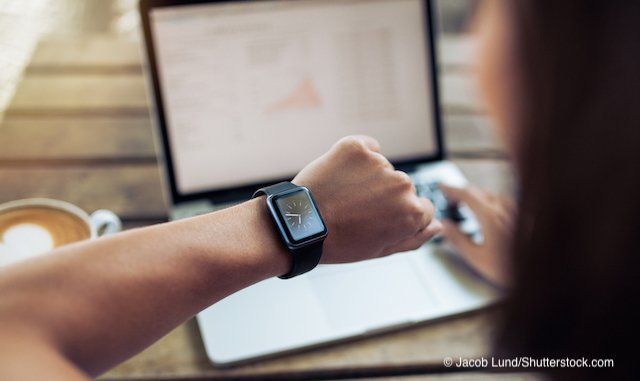Amazon Considers Wearable Device Space
What the development means for healthcare.

Daniel Cidon

Healthcare organizations’ ears are perking up at the report of Amazon’s possible foray into the health-tracking wearable device space.
“Healthcare execs should be watching this as it’s just another sign of the trends that are all right in front of us: people want access to everything in life in the most convenient ways possible,” says Matt Fairhurst, CEO and co-founder of Skedulo, a mobile workforce management platform for in-home healthcare companies with offices in Brisbane, Sydney, San Francisco, and HoChiMinh City. “Amazon is a big part in facilitating this. With a wearable product, Amazon will create another source of data to directly understand the needs and wants of its consumers. There are opportunities for large health organizations to partner with Amazon early to make the data from these wearables actionable.”
The wrist device reportedly will work with a mobile app and be able to recognize human emotions.
“If [Amazon] created an ambient listening wearable which connected to healthcare-related services and performed sentiment analysis-‘Are you calm or worried?’-many healthcare organizations would be interested,” says Managed Healthcare Executive Editorial Advisor John D. Halamka, MD, executive director, Beth Israel Lahey Health Technology Exploration Center, who also leads innovation for Beth Israel Lahey Health, and serves as International Healthcare Innovation professor at Harvard Medical School. “Ambient listening can provide a very positive patient experience.”
Amazon certainly has the reach to enter the healthcare space, according to Fairhurst.
“Amazon has such a large footprint in so many people’s lives, from online buying, to in-store shopping through its new Amazon Go stores and its recent acquisition of Whole Foods, to its entertainment options via Prime, and even its Alexa devices. Because of this, the company certainly has the reach to enter the healthcare space,” Fairhurst says. “Amazon is already a huge part of many people’s lives, and it’s made a business out of learning about people’s shopping and media consumption habits to serve up ways for them to easily fulfill their needs. This next step is a natural extension of that. By having a literal pulse on the consumer, Amazon will be able to continue down this path of mining data to deliver exactly when they are needed.”
Related: What Healthcare Executives Can Learn from Amazon’s Leadership Principles
The future
The future of patient identification can benefit greatly by wearable devices such as the one being considered by Amazon, according to Daniel Cidon, chief technology officer of NextGate, a global patient identification solutions provider in Monrovia, California.
“Mobile technology is a promising tool to advance patient matching and safety efforts since it already includes many of the biometric security capabilities, like finger print readers and facial recognition, needed to ensure the identity of the individual being treated,” Cidon says. “Further, it is a convenient mechanism by which consumers can manage their own health data and communicate key changes to their demographic information. This would greatly reduce the hassle, time, and errors associated with traditional check-in or registration processes, while improving patient safety and satisfaction.”
In addition, according to Cidon, when patients enter a hospital for treatment, they are often asked multiple times to present their driver’s license or repeat their name and date of birth. “This can become frustrating for critically ill patients being seen by multiple care professionals in various departments,” he says. “Imagine if consumers had their wearable device automatically communicate their identity so that the clinician or care giver could be assured that the tests and procedures being performed were correctly associated to the individual’s medical record.”
In the Scope of Virtual Health and the Future of “Website” Manner, Per Ateev Mehrotra
August 10th 2023Briana Contreras, an editor of Managed Healthcare Executive, had the pleasure of catching up with MHE Editorial Advisory Board Member, Ateev Mehrotra, MD, MPH, who is a professor of healthcare policy at Harvard Medical School and an Associate Professor of Medicine and Hospitalist at Beth Israel Deaconess Medical Center.
Listen